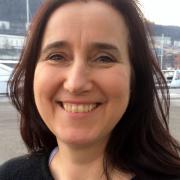Self-guided and facilitated learning tools for exhibitions
Find this session's presentations here.
How can we facilitate meaningful high quality learning experiences in our exhibitions? In this session will discuss both tools for self-guiding and guiding by facilitators.
We will share and discuss the development and use of tools that guide visitors in their exploration. Tools that provide guidance, but not answers. We will then present a design framework for tools for self-guided explorative learning experiences. This framework is developed based on learning theory and a design-based research study.
Then we turn to personal guiding, either by staff or parents and look at two cases studying how family teams explore on the museum floor. Can a trained facilitator help visitors get a better experience by giving explanations or describing evidence? Or are they better off exploring on their own? What about the youngest visitors often guided by parents? Do they need this guidance and how does this influence the way they explore and their curiosity?
Facilitator
Content developer and educator
Session speakers
Learning Officer and Trainer
Naturalis Biodiversity Center
At Naturalis Biodiversity Center we confront our family visitors with objects and materials that make them wonder and rouse their curiosity. They can observe, touch and play. And then… what? How do visitors know what to do next, what to ask next, what to discuss, what to think? We have developed tools to help visitors. These tools aim to provide guidance, but not answers. We want visitors to leave with a satisfied feeling, so we have studied these tools closely to find the optimal result and to develop guidelines for future projects. In this session we will share our research journey and show you the tools and guidelines we have developed.
How can exhibitions be used as a resource for students’ learning in a way that safeguards the unique potential of generating productive engagement in science? To address this question we have developed a framework for designing material for self-guided experiences. This design framework involves considering the following elements as educational resources: the exhibits, texts, the social group of students and their teachers, and students’ prior experiences. Presented theoretical perspectives and practical experiences is based on a design based research study.
Senior Project Manager Education
How do family teams explore at the museum floor? Can a facilitator who focuses on giving descriptions of relevant observations stimulate rich conversations and better experimentation within families? In an experimental study we have observed over hundred family teams (two children, one adult) during their play at a standalone exhibit in NEMO Science Museum. We will present data from three conditions of guidance (giving explanations, describing evidence, no guidance) analyzed to reveal interactions between families in relation to person characteristics.
Do youngest visitors really need to be guided in the science center? How does the style of guiding influence their curiosity and participation? I will present data gathered in the gallery Bzzz!.. for the youngest Copernicus visitors.
We will see how the parenting style reflects children activities and the quality of their visitors' experience.





